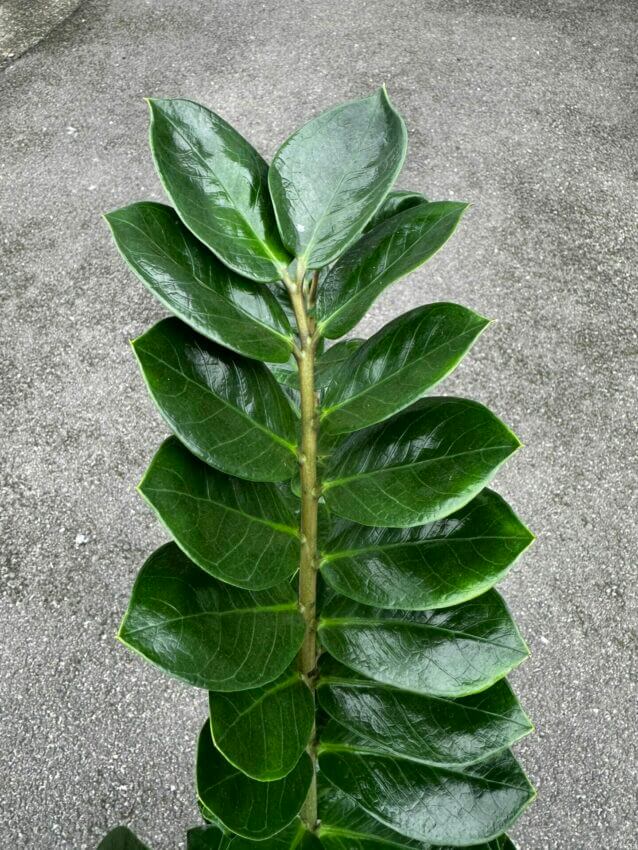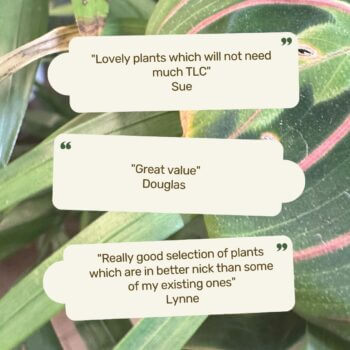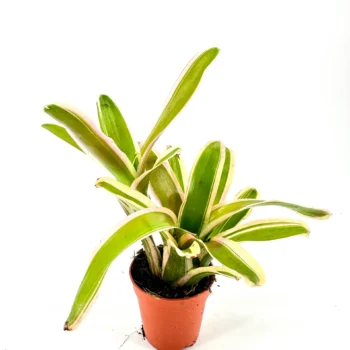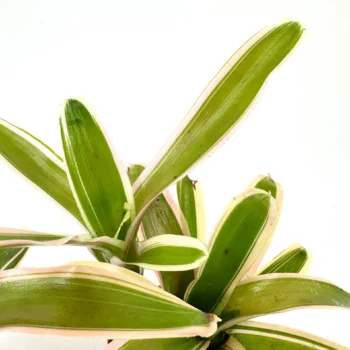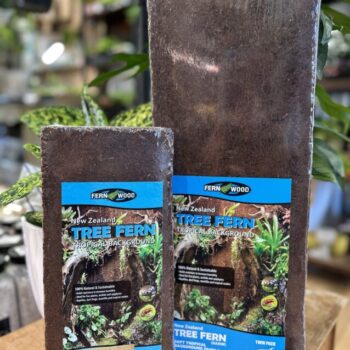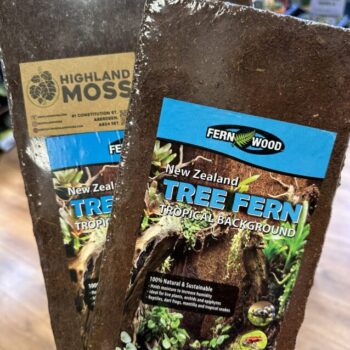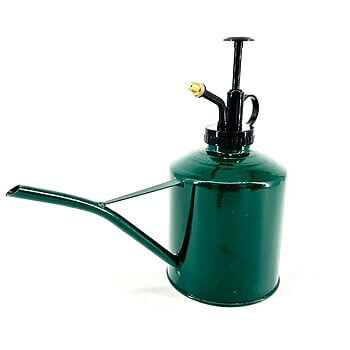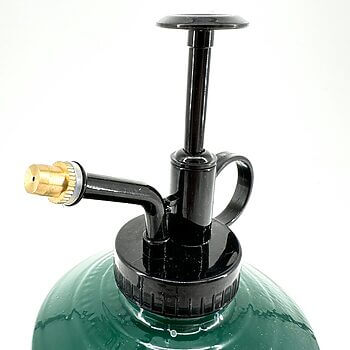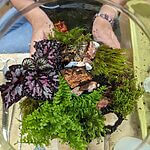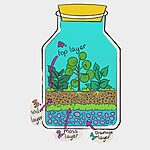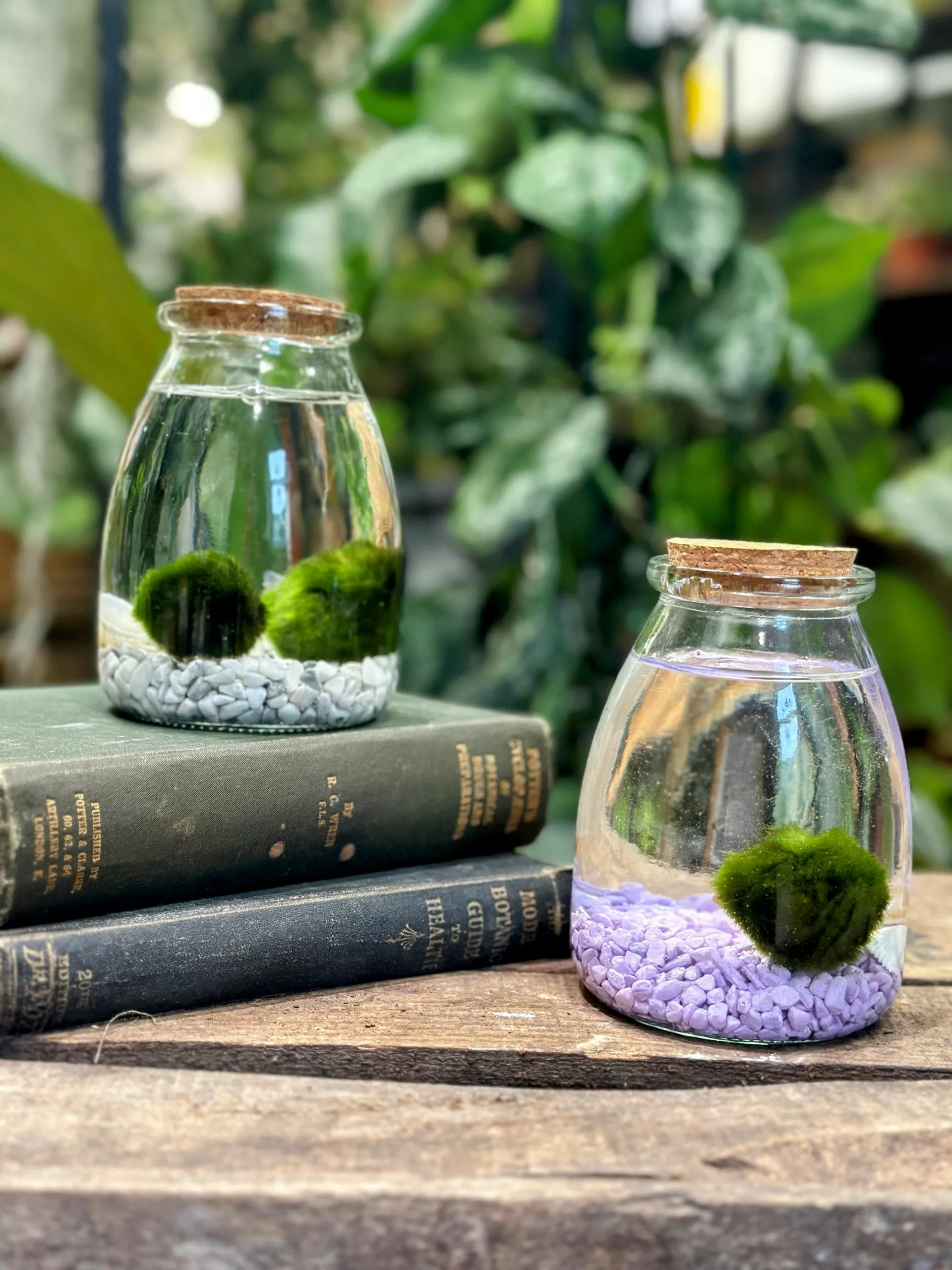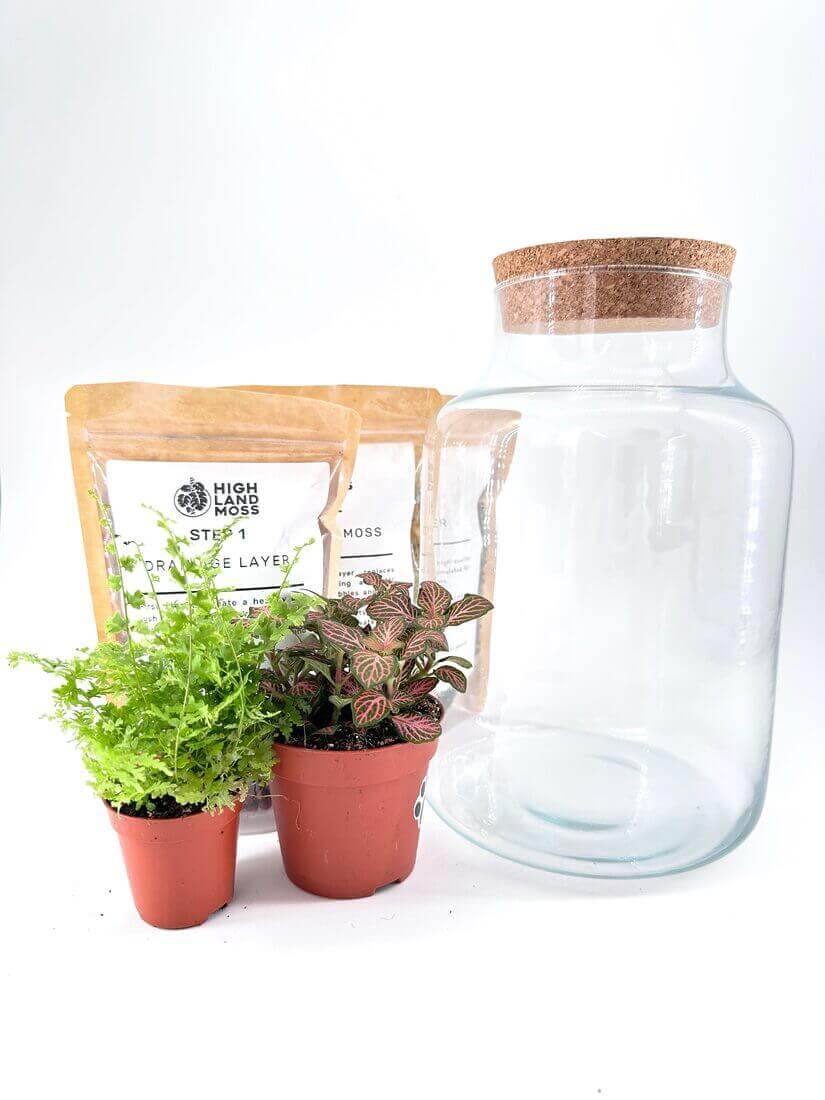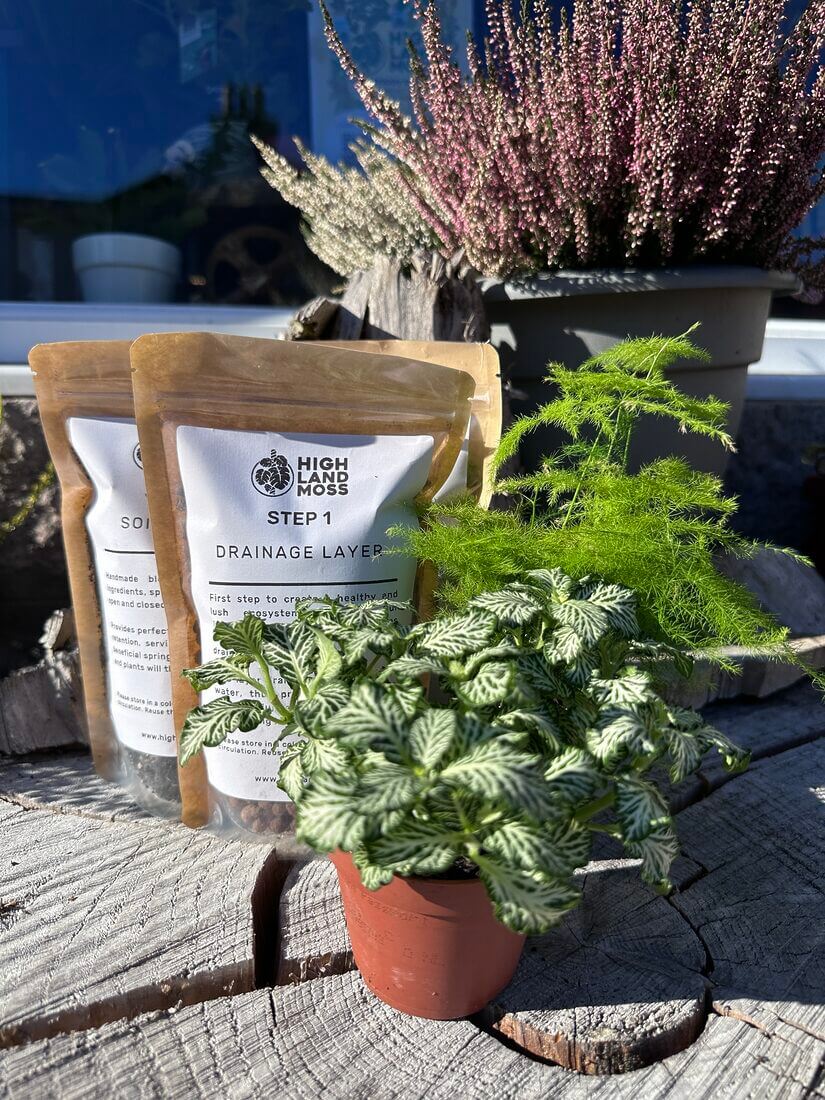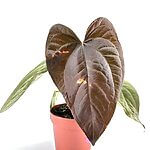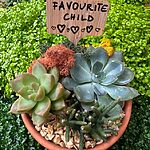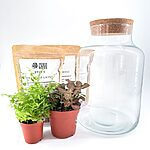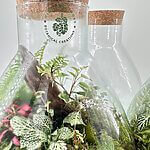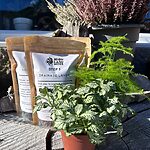Table of Content
All About The Mesmerising Maranta
Maranta’s are another wonderfully special houseplant, their highly decorative leaves come in a range of tones and colours and offer a real spectacle of natural beauty inside the home. This genus of plant belongs to the Marantacease family, meaning Maranta fall into the same family as Calatheas, sometimes sharing a strong resemblance to each other and can often be mistaken for one another. There are an estimated 50 species within the genus that consist of clump-forming perennials that grow from rhizomes. The majority of species that have made their way into our homes are native to Brazil but the rest of the genus can be found scattered across the tropical forests of South America and with a few species also growing in the West Indies.
While some of these species are relatively easy to take care of, I would class Maranta’s at the intermediate level of care as they can be a bit fussier than most. They would prefer you to provide a growing environment similar to their native environment, ideally, these plants would perform best in a greenhouse. But you can still help them to thrive whilst keeping them in your home.
Maranta’s were given their name after the famous Italian 16th-century Botanist Bartolomeo Maranta. But they have received the common name “Prayer Plant” after an interesting adaptation they have formed to save energy during the night. Once the light level has dropped and it has become dark the flat leaves of the Maranta fold upwards almost perfectly in half giving it the appearance of praying hands.
Light
Maranta, like most houseplants, will perform best in areas with an abundance of bright indirect light. But these plants would normally be found amongst dense vegetation on the forest floor where the light levels can be quite low. With this in mind, Maranta is well adapted to be placed in low-light areas as houseplants, while they will still need some light to be able to photosynthesise, they can tolerate shady areas much better than most houseplants. But this also means they should be placed out of reach of direct sunlight at all costs as this will scorch the leaves and cause the plant a high level of distress. Note that some Maranta’s will lose their colour with insufficient light, it’s always best to do some research before choosing the perfect position for your plant.
During the winter these plants should get the first pick of the brightest spot in the house. They tend to go dormant during the winter months and rely on the light to keep them ticking along until spring. Without the brightest light possible during the winter these plants can die back completely. While they should still re-shoot in the spring, it can be disappointing to lose all that gorgeous foliage.
Humidity
Being tropical forest plants, Maranta thrives in high humidity and feels most comfortable at around 60-80%. These plants won’t enjoy tolerating lower levels of around 40-50% humidity and can quickly go brown and crispy around the edges, even if you are watering the plant sufficiently, they won’t perform as well without some additional source of humidity. You can increase humidity by misting your plant throughout the day or providing a heavy misting every couple of days (be sure to use rain or distilled water for Maranta’s). But for these plants to really perform at their best you need to pick their location very carefully and keep a close eye on how they are responding to their environment.
Water
These plants are susceptible to overwatering and highly susceptible to drought, both of these things can be very damaging to the health of the plant. It’s best to keep a close eye on these plants regularly, checking them every 2 to 3 days throughout the growing season. Be mindful that the brighter the spot the plant is placed in the more likely it is to dry out quicker. When watering ensures to keep the soil evenly moist and avoid watering heavily to the point the soil becomes saturated as this can starve the roots of the airflow it needs to survive. Always avoid wetting the foliage when watering as this can quickly lead to fungal disease.
It’s always good practice to use rain or distilled water instead of water straight from the tap, it is essential with Maranta’s as they are more sensitive than most to the chemicals that can be found in everyday tap water, the tips of the leaves will turn brown if watered with tap water.
Soil
Maranta prefer well-drained soil that can retain some moisture between watering. The ideal soil mix for these plants will be nutrient-rich, allow for good aeration, be slightly acidic (6.2PH-6.6PH), and be free-draining with a smidge of water retention. While not part of the Arum family they will appreciate an aroid potting mix as this will give them the environment they need to perform well.
Other good potting mixes for Maranta can be made up of; 1 part shredded bark (orchid bark will do the same job), 1 part vermiculite, 2 parts perlite and 4 parts sphagnum moss. Or just a regular house plant potting mix enriched with perlite, for this mix it’s best to go for 60% house plant potting mix and 40% perlite.
Feed
Maranta are hungry plants and like most houseplants, to promote healthy roots, stems, and leaves they will need a steady supply of nitrogen, phosphorus, and potassium. The most important thing is nitrogen to keep their colourful leaves looking their best. A good liquid houseplant feed can be applied once every two weeks during the growing season.
You can also feed your Maranta during winter, dilute your regular feed by half and double the time between applications.
Repotting
It’s best to re-pot your Maranta once the roots fill their pot. Depending on the size of the plant, you may find yourself repotting once per year. These plants don’t like being pot-bound, they can survive like this but normally their growth rate will slow dramatically and if left for too long will start to show signs of distress.
The pot size can increase by one step up every year. Maranta tend to perform better in wider pots as they grow from rhizomes, having a wider pot will allow the rhizomes to grow more comfortable and will help support a healthier plant.
If you have reached your maximum pot size you will need to top-dress the plant once a year with a fresh layer of soil to replenish the nutrients and think about trimming the roots back to encourage fresh growth and stop it from becoming pot-bound.
The best time to repot your Maranta is when spring arrives. Outside temperatures will rise and the daylight hours will increase. When this happens your Maranta will react quickly to the environmental change and start producing lots of new foliage growth.
You will need to pick a pot with good drainage, we don’t want water hanging around the roots.
Next, fill a third of the way up with your potting mix and place the root ball of the plant in the centre of the pot.
Fill the pot with the rest of your potting mix and firm down the soil.
When you’ve finished and got your plant back in the perfect spot you can give it a thorough watering to settle the plant into its new pot. Keep a close eye on it for the first couple of weeks and then relax back into your normal watering and feeding schedule. Avoid feeding for the next 4 weeks as this influx of additional nutrients can cause damage to the root system and make it difficult for the plant to settle into its new environment.
Pests & Disease
Even though Maranta’s are tough and resilient plants they can still suffer from pests. It is good practice to regularly check your plants for any signs of aphids, red spider mites, mealy bugs, and thrips. By checking regularly, you allow yourself time to prevent a full-blown attack.
The most common pests Maranta’s tend to suffer from are red spider mites. This will normally occur from a lack of airflow and humidity. If you can increase both of these aspects, the pests tend to subside but will need to be treated to fully get rid of the issue.
Maranta can suffer from a leaf spot disease called Helminthosporium leaf spot, which is a common disease and is a result of overwatering. If you notice spotting on the leaves you will need to act fast, adjust your watering, and place the plant somewhere it can dry out quickly. This should allow the plant to recover. In severe cases, it is sometimes best to cut off all affected leaves and isolate them from your other plants.

Check our video on homemade pest remedies or head over and read Fungus Gnat Fact Check and Home Remedies how to guide
Pruning & Propagating
To keep your plant looking full and lush it is always good practice to keep it well trimmed. Cutting away the oldest and most damaged growth on the plant is a great way to encourage new foliage growth and to keep your plant happy.
Maranta are easy to propagate from cuttings. When trimming back your plant you have two options. If you want your plant to become bushier and dense, prune above the node. Alternatively, if you prefer the more elegant and longer-growing stems prune below the node. Both make for good cutting materials.
Simply place your cuttings in a glass of rainwater and wait for up to 2-4 weeks to start seeing signs of new roots. You will need to regularly change the water to avoid algae. Once you have substantial root growth you can place the cutting into a small pot of aroid potting mix.
You can also put your cutting straight into a jar with fresh sphagnum moss. This is probably the easiest way to propagate as it involves the least steps. Simply take your cutting at the node, find a jar or pot preferably with no drainage holes, fill it up with fresh moss and nestle your cutting in the centre. Fill up the jar with water so the moss has been evenly watered and then drain out all excess water making sure not to leave any at the bottom of the jar when standing upright. Now just keep an eye on your new cutting, checking the moss every couple of days to ensure it hasn’t dried out.
We’ve got all sorts of great moss you can use check them out here!
Maranta grow from clump-forming rhizomes so another easy way to propagate these plants is by dividing them.
Dividing Marantas is a really simple and easy job. Due to their clump-forming nature, the natural division points are clear to see and will often only need a gentle pull apart. Ensure that each clump has a decent amount of roots attached before pulling it away from the main root ball. With especially large or mature Maranta it may be tricky to pull these clumps apart as the roots will be tangled, forming a strong bond between clumps. In this case, it is best to use a sterilised sharp knife to cut through the root ball, again ensuring to leave a decent amount of roots on each section you are dividing.
Troubleshooting & Tips
- These plants should always be kept at a temperature above 15°C. Constant temperature fluctuation can cause serious damage to Marantas and will stop them from performing at their best.
- Inward curling leaves are a sign your plant needs water. Maranta’s don’t tolerate being left underwatered so be sure to act quickly if you spot these signs. Try to learn the difference between your Maranta’s natural ‘prayer’ curling, and curling due to underwatering.
- Yellow and/or wilting leaves are signs that your plant has been overwatered. Allow the plant to fully dry out before watering again and check the root ball for signs of root rot.
- If your Maranta leaves are looking faded and bright colours no longer seem so bright, this is often a sign that your plant is getting too much or too little light and will need to be moved to a shadier or sunnier location.
- If you are developing crispy brown patches on the leaves, this is often a sign your plant is in the path of direct sunlight and is getting scorched and sunburnt.
- Discoloured leaf tips and edges are an indicator that the environment is too dry. You will need to boost the humidity.
- If the edges of your plant are starting to become brown followed by the whole plant wilting, this can be a sign of temperature or transplant shock, which can occur from sudden changes in ambient temperature or persistent cold drafts but can also develop if the plant is watered with cold water causing shock to the root system.
Toxicity
Marantas are classed as non-toxic to humans and pets but it’s probably still best to keep them out of reach of curious children and pets.
Species

Maranta Fantasy Prayer Plant
A rare addition to Maranta and almost looking like a miniature Calathea, this plant is a true pot of beauty. Its broad ovate leaves of matt lime green stand out with striking veins of light green that look creamy white from a distance, the detailed veins draw your eyes and direct you to the decorative splashes of deep green on the centres of the leaves.
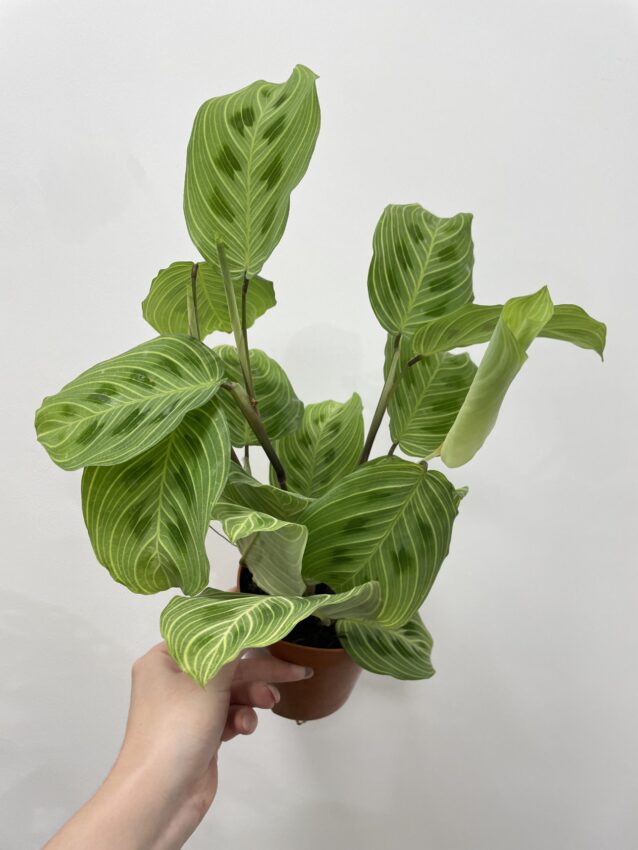
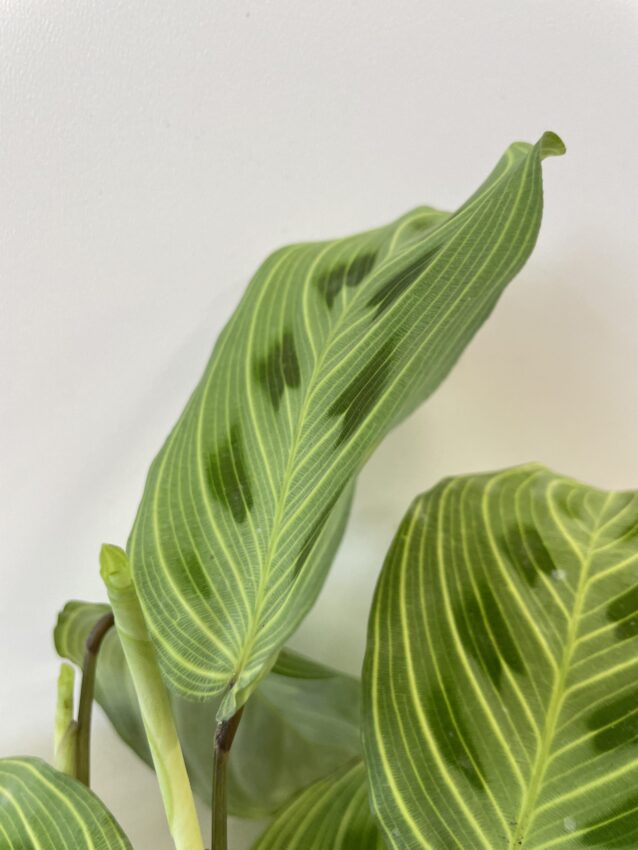
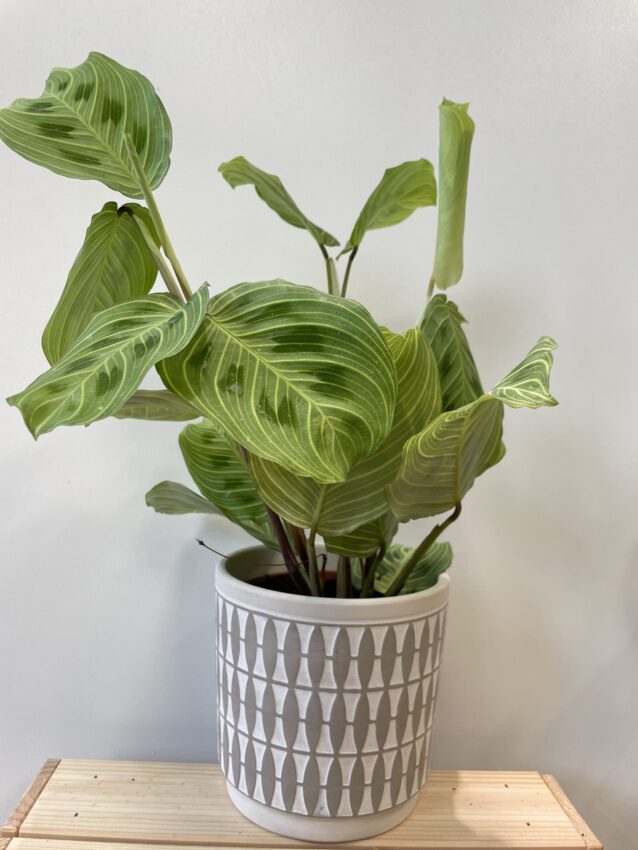

Maranta Leuconeura Kerchoveana Variegated
This Maranta is one of the tough ones and is much more forgiving, making this an excellent entry-level Maranta. Already a stunning plant with elegant long stems with compact ovate leaves of rich green with dark green splashes that can transition to a reddish brown, this plant is elevated to the next level from its gorgeous variations covering the leaves in stripes, strikes, and dots of white and cream.
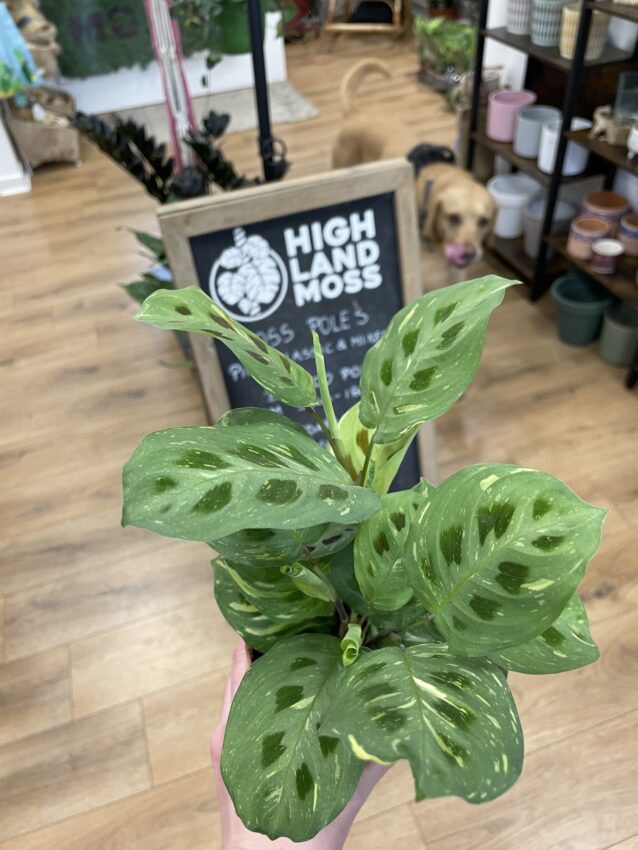
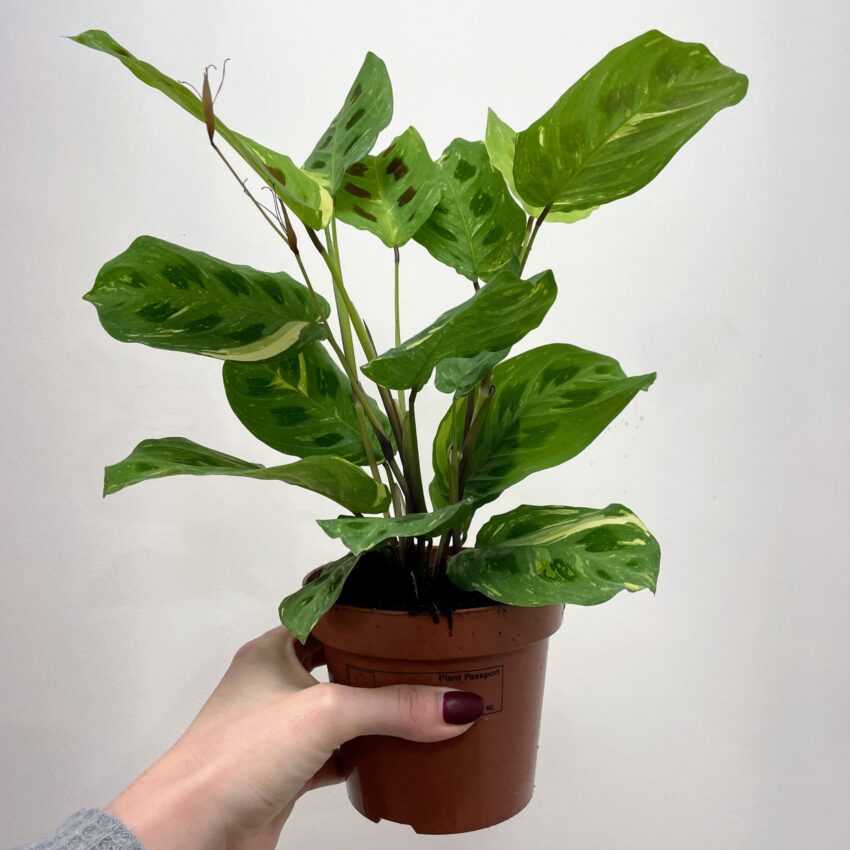

Maranta Leuconeura Fascinator Prayer Plant
In my opinion, no collection is complete without a Fascinator prayer plant. This amazingly colourful plant is a tricolour variety. Its showy deep pink veins set off the colours of the compact ovate leaf, with vivid light green centres almost making a serpentine pattern on the centre of the leaf. The colour transitions to a dark jungle green before becoming lighter around the edges. If that wasn’t enough, you can then enjoy the purple underside of the leaves which fold up at night.
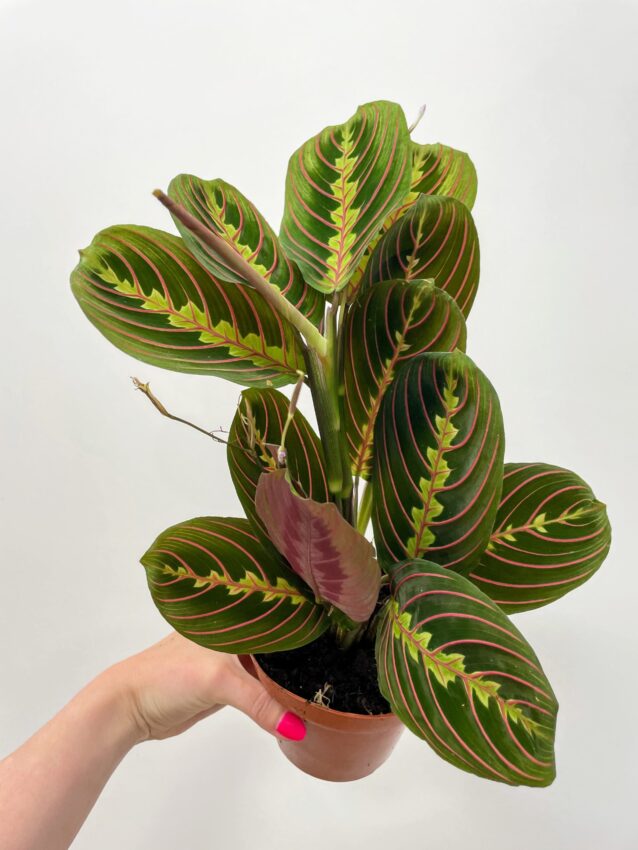
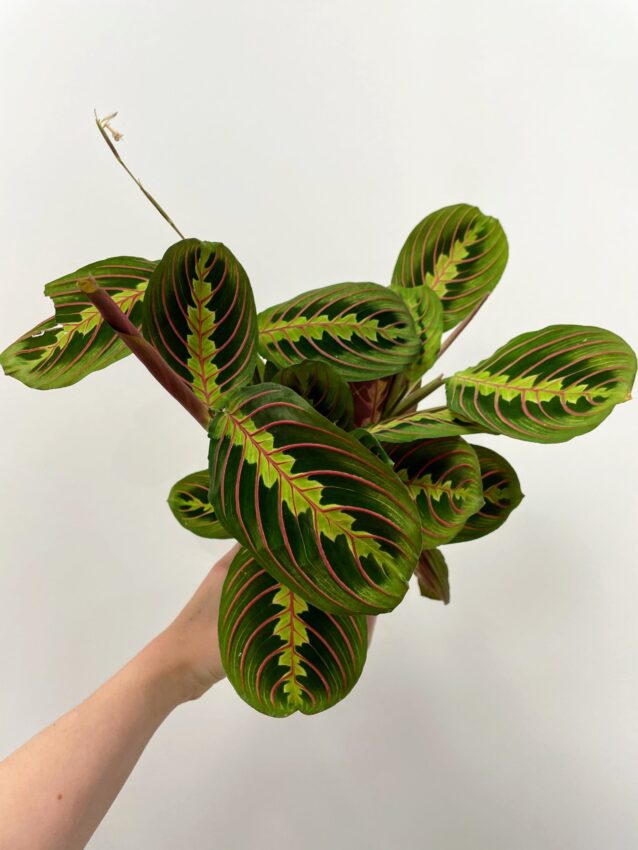
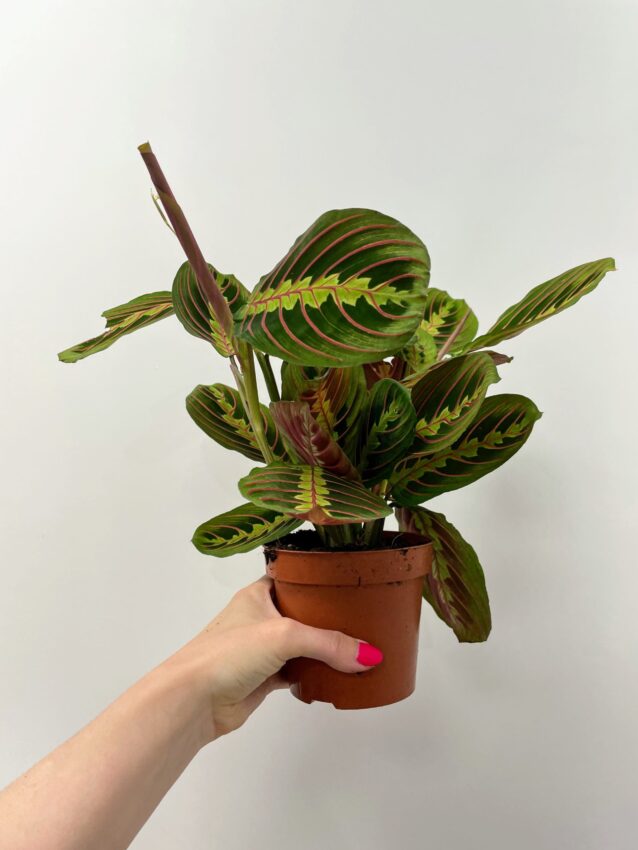

Maranta Lemon Lime Prayer
This plant has been tagged as one for the collectors, and rightfully so considering its gorgeous foliage. It is by no means as colourful as other Maranta’s, but it is definitely one of the most vivid greens that houseplants come in. A striking mix of light green veins, with a strip of bright green forming in the centre of the leaves before transitioning to the richest of jungle greens, slowly becoming lighter as it reaches the edge of the leaf.

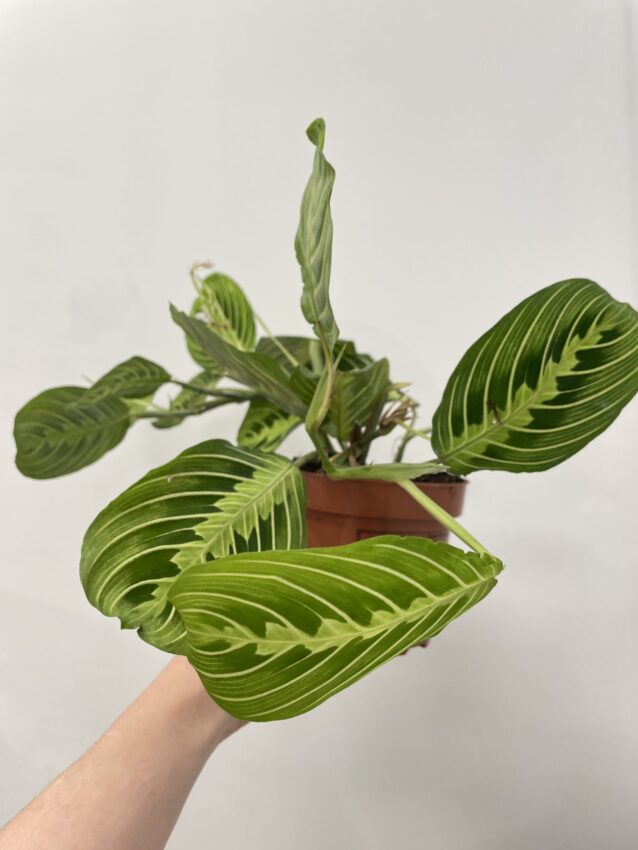
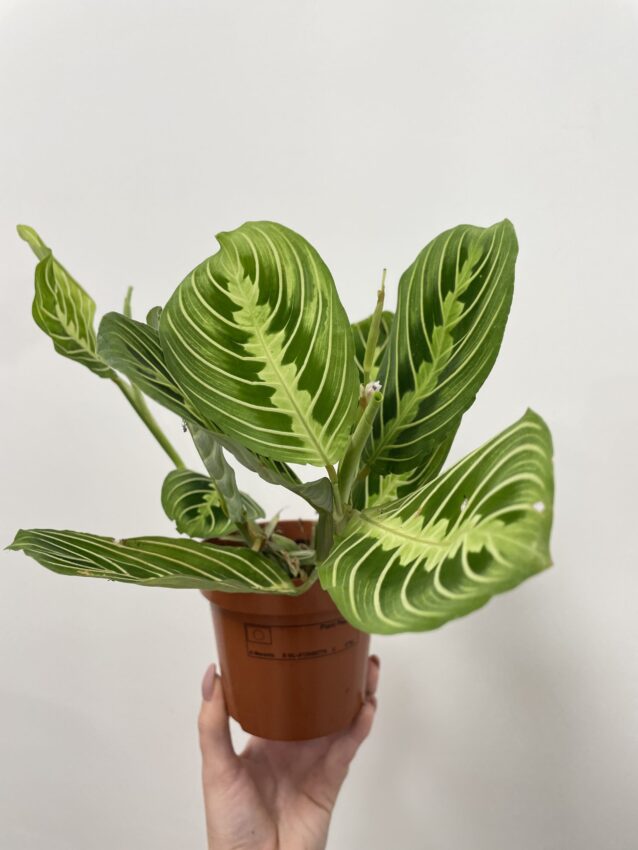


Maranta NOID Prayer Plant
Another stunning example of Maranta. These truly gorgeous plants grow out horizontally forming a prostrate structure of delicate and elegant leaves. The leaves are incredibly dark green, not far from black, and from a glance don’t look real. The plant is strongly contrasted by the almost fluorescent green centres that bring a magical look to the plant. This plant must be seen in person to truly appreciate its wonder and beauty.
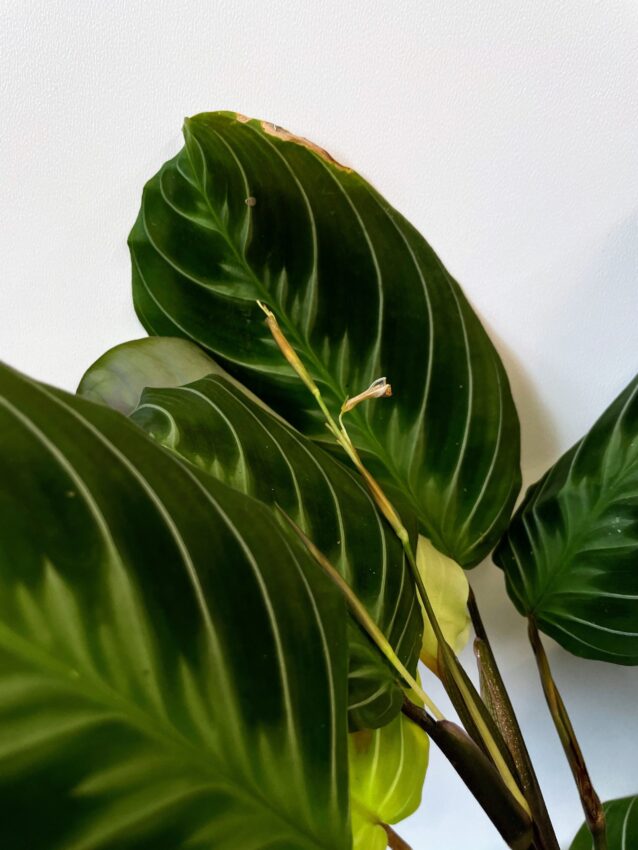
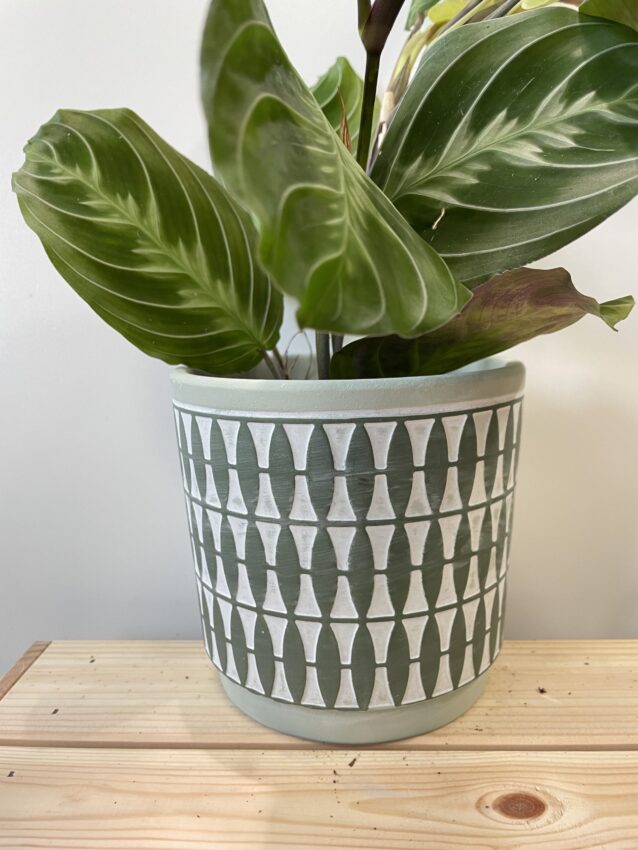

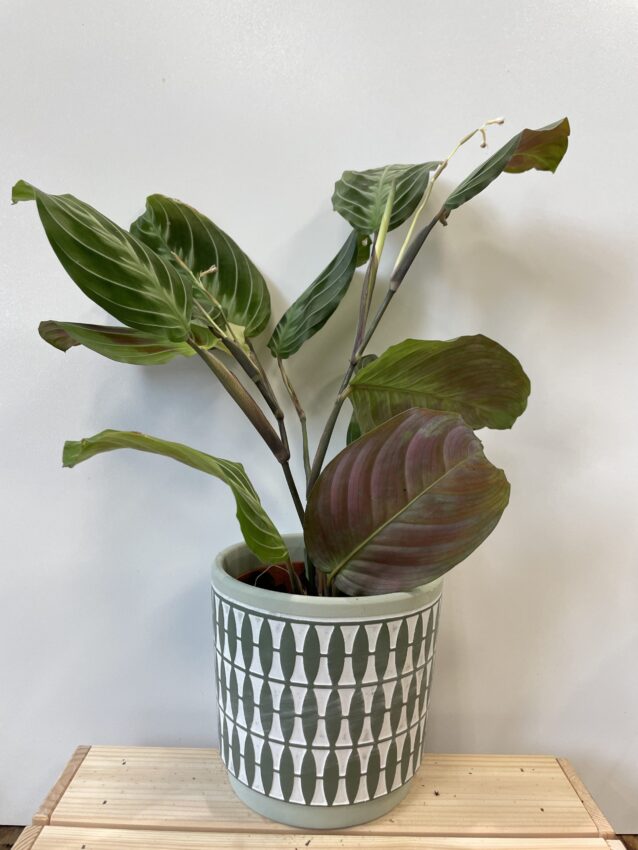
If you enjoyed this guide head over to Articles & Blogs to learn more or check out our YouTube for even more useful information!



